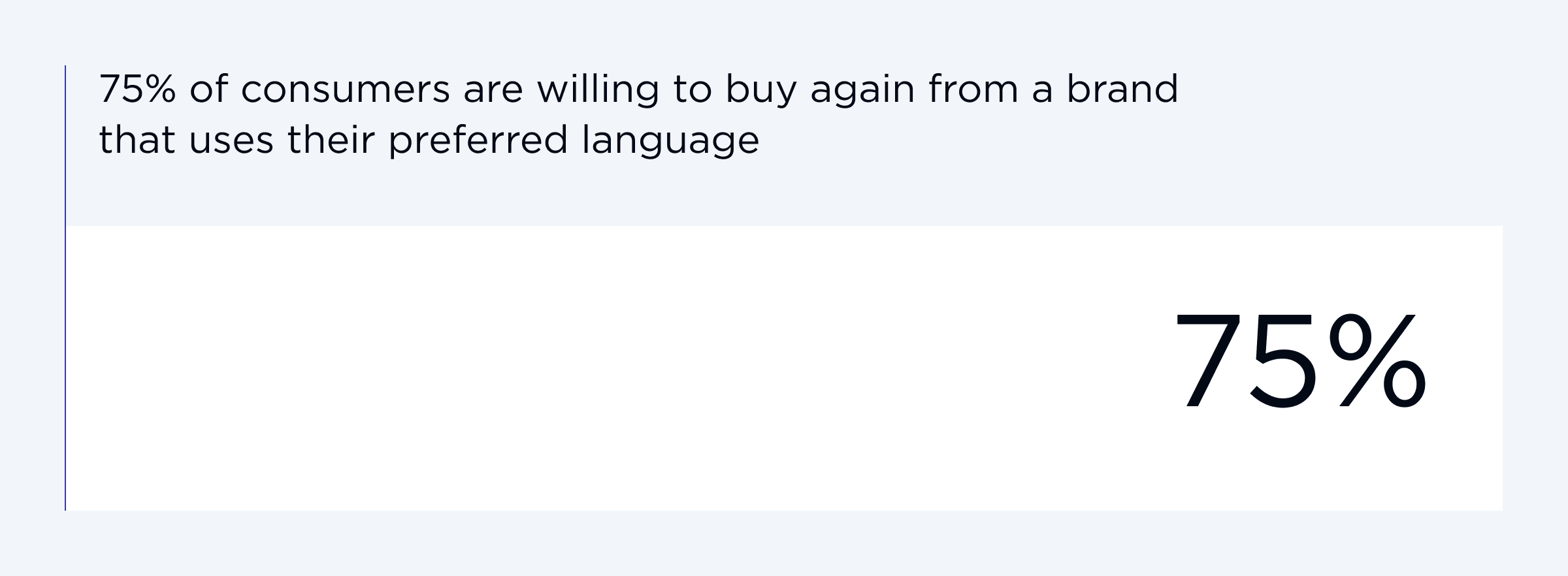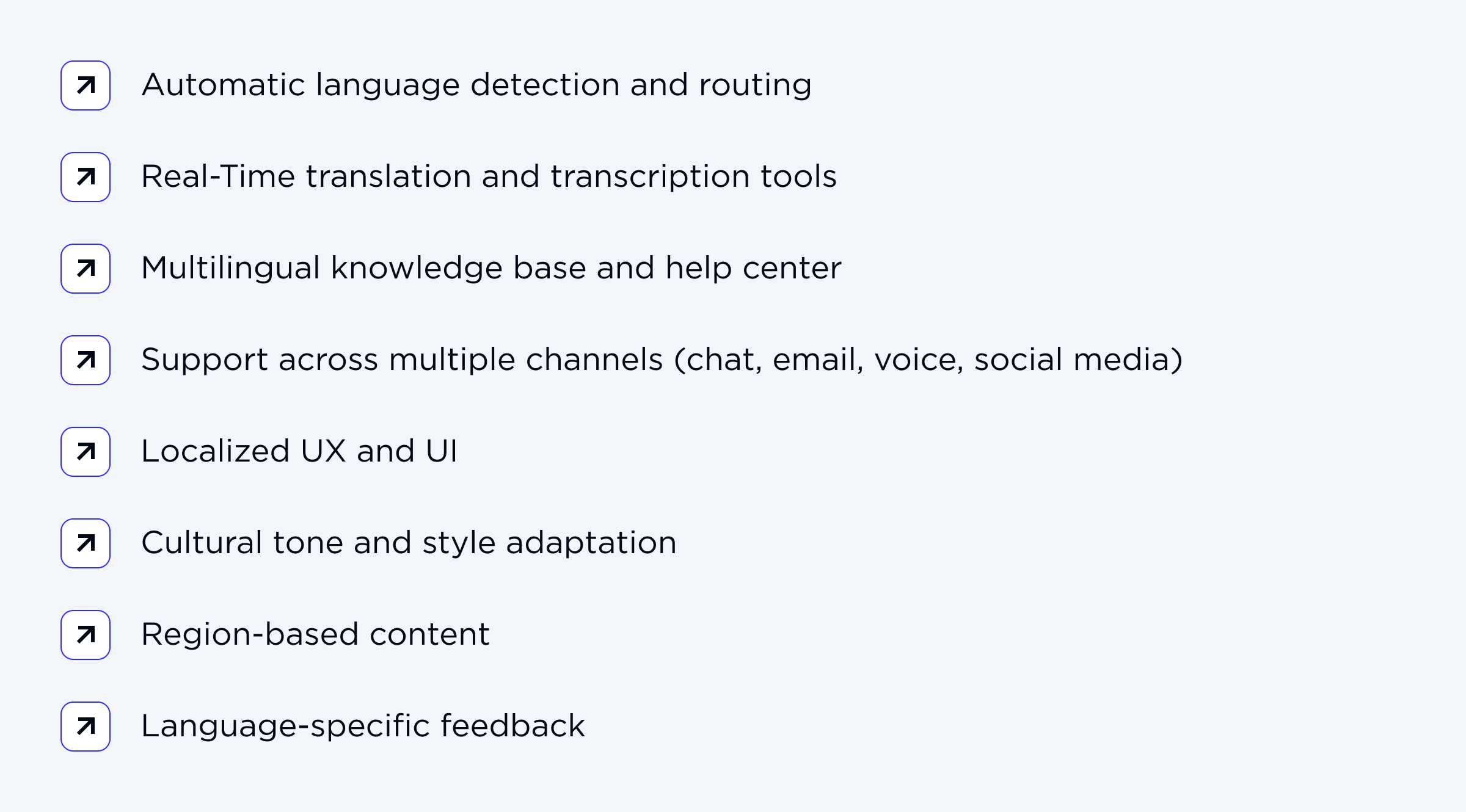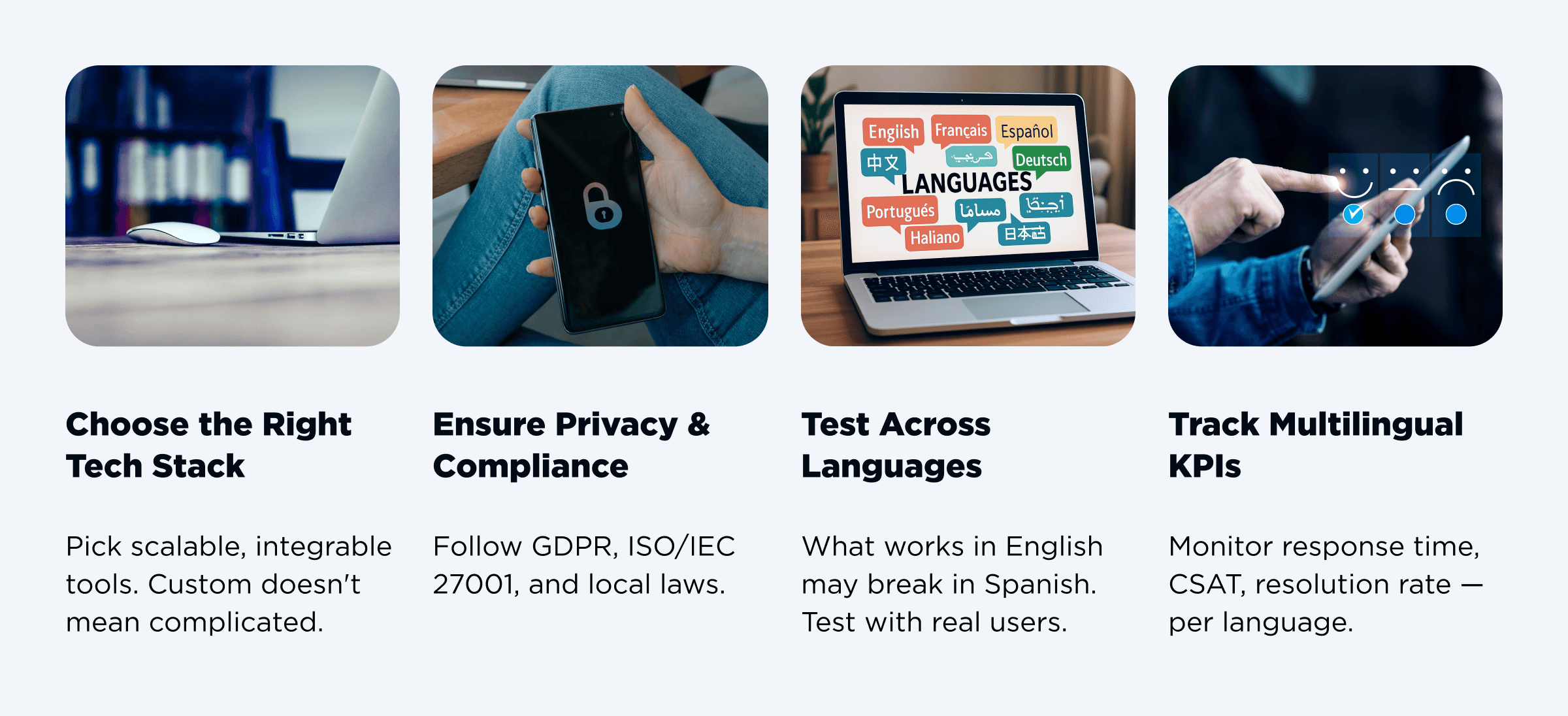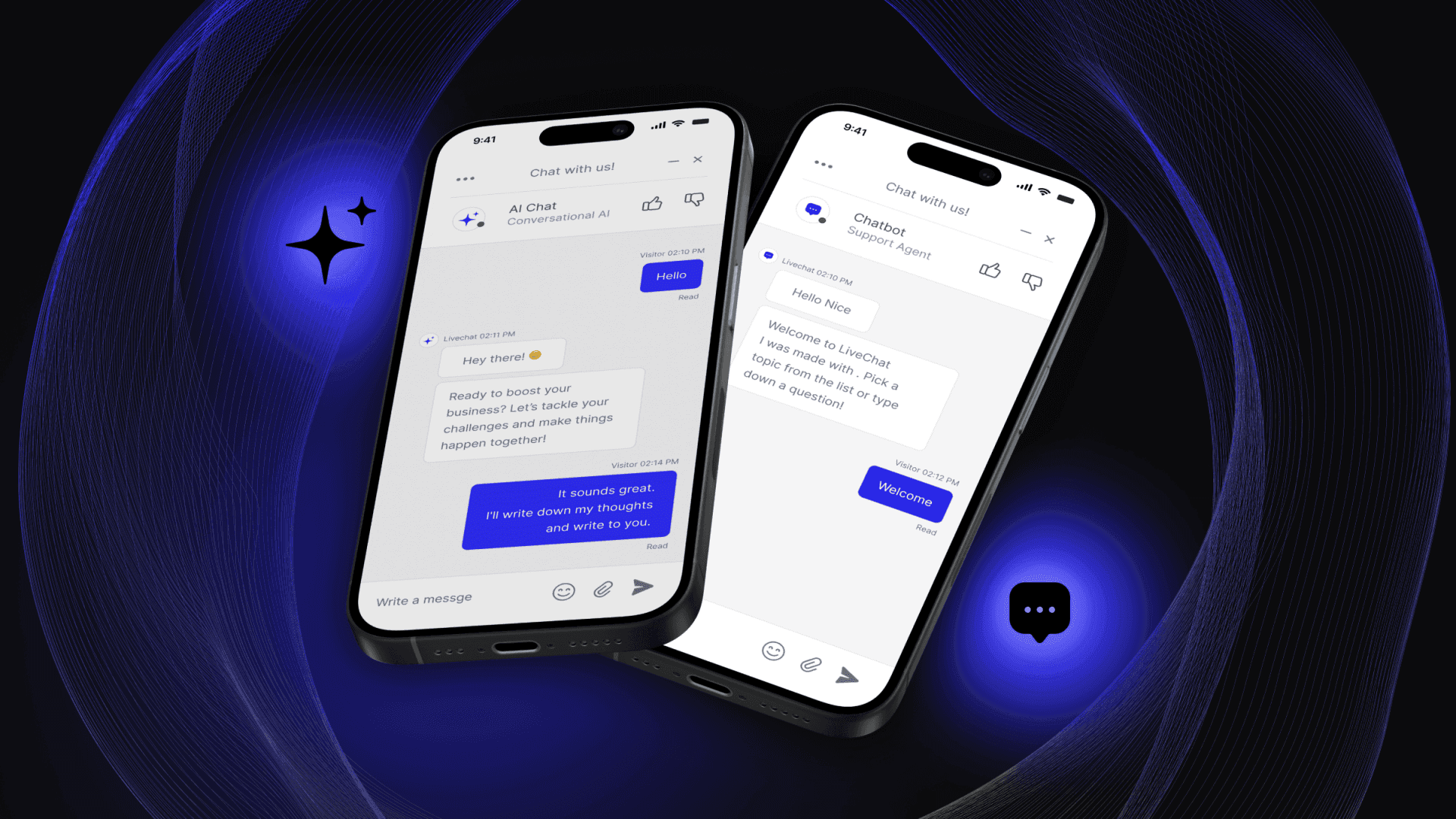Remember the times when all businesses used only their native language on their websites? We were so lucky when globalization gained traction and the option of the English language became the default. However, modern-day globalization seems different, and most businesses growing globally can’t get by with English-only customer support. Even though there are more people who speak this language as their second language than actual native-speakers, a lot of things get lost in translation.
Reasons for the increasing need for multilingual support go beyond global expansion. Easy to understand, fast, and clear - these are the main requirements of the present day. And let me stop you before you start imagining a call center with a hundred human translators. We are lucky to have smarter and more cost-efficient ways to deal with it. There are plenty of solutions, from AI chatbots to real-time translators, to provide support for people no matter their origin. So, how do you make a multilingual customer support system that keeps everyone happy? Well, that’s what we’re going to discover in this article.
Defining a Multilingual Support System and Its Key Components
Before I dive into the main points that make multilingual customer service tick, I’d like to briefly outline what this system is. Any type of this setup is designed to help users in multiple languages across various channels of communication, e.g., email, phone, chat, social media, etc. The main goal is to make businesses and customer support faster, more accessible, and culturally relevant. Here’s the kicker: the 2023 Trends in Multilingual Customer Support report quotes the CSA research, which discovered that 75% of consumers are ready to purchase from the same brand when it offers their preferred language. Sounds fair, why they’re becoming so popular and in demand.

But what components make it happen? Let’s break them down.
Language detection and routing
The best part of a multilingual customer support chat is that it can automatically detect the language when a customer messages your support. As a result, it can route the request properly. Sounds great, right? The system may figure out whether this query needs a human agent (native-speaking, for example) or an AI tool. This is an essential component, as you don’t make your users scroll a language menu (frequently, they don’t even do that).
Real-time translation and transcription
We’ve reached the point of real game-changers. And I’m not even exaggerating. Why, you might ask? These tools assist human agents in holding conversations in real time without knowing the customer’s language. And yes, it’s real and it’s happening. Take, for example, Google Translate APIs or DeepL, which can already handle chatting on the fly. Such translation and transcription solutions integrate well with emails, chats, or even phones.
Multilingual knowledge base and help center
Language detection, routing, and real-time translation tools are not the only breakthroughs. You should always remember that some people don’t want to talk to support. And that’s the truth. However, multilingual customer care also includes a detailed and well-structured knowledge base in various languages and adapted to the cultural context. Some users are eager to find answers themselves, and you can assist with images, videos, and guides.
Support across multiple channels (chat, email, voice, social media)
I’ve already mentioned that you implement these systems across various channels, and this is a distinct feature of advanced customer support. Different countries have different preferences and habits. Some customers prefer email, others choose live chat, and others - WhatsApp or other messengers. Your system can cover all major touchpoints and, drum roll, in multiple languages. You basically meet with customers where they are.
These are just major components that transform the market. Below in the picture, you may find other examples that can make a difference.

Multilingual Customer Support: Technologies That Make It Happen
I’d like to say, “Let’s see how the magic happens!” But it’s not magic, it’s technology that makes all this possible. So, let me introduce you to those “magic things” that turn chatbots into polyglots.
AI-driven chatbots and virtual assistants
Modern chatbots and virtual assistants are smart and can recognize requests in different languages. They significantly improve multilingual customer service by not only providing answers in various languages but also transferring conversations to human agents. Slang? Typos? Tone? They handle everything and keep things natural.
The power of multilingual AI isn’t just in understanding multiple languages — it’s in interpreting meaning, tone, and intent across cultures. That’s what transforms a chatbot from a scripted tool into a real conversation partner.NLP and machine translation APIs
First things first, Natural Language Processing (NLP) changes a lot in the services we provide. It helps to understand not only what was said but also what was meant. But when you combine it with machine translation APIs (Azure or Amazon Translate, for example), you can have a solution that scales easily without breaking the bank.
Integration with CRM and helpdesk platforms
Most companies, and I bet your team as well, already use Salesforce, Zendesk, Intercom, Freshdesk, HubSpot, or Zoho Desk. These and other platforms can easily integrate with multilingual support chatbots, translation tools, and analytics dashboards. You get even more automation without disrupting any processes.
Voice recognition and speech-to-text tools
Even though most people use messaging, voice support is still vital for some. There’s a way out - you just need speech-to-text tools, and your AI agent can hear, understand, and reply to customers in various languages. The future of multilingual customer care promises to go even further, with voice messaging in various languages.
Strategies for Building a Custom Solution That Actually Works
There’s no denying how important technologies are for the success of top-tier solutions. But I can’t help mentioning that tech is just one part of the story. Nothing will work well without a solid strategy. How do you define what approach works best for your multi-language customer service? Let’s find out!
| DOs | DON’Ts |
| Assess and prioritize languages based on real data | Try to support all languages from the very beginning |
| Focus on localization to get culture, tone, and context | Rely only on word-for-word translation |
| Adapt UX and UI for each region | Use the same UI/UX for every market |
| Train your team for cross-cultural communication | Assume AI tools can handle all cultural nuances |
| Scale your multilingual system based on market growth | Overload your system with too many features |
| Combine tech with human empathy | Expect AI to replace human support |
Assess and prioritize language coverage
Don’t aim to support all existing languages right away. Analyze where your customers are from at first using analytics tools or CRM data. Only then select and prioritize languages to add first, and those you can add later based on market growth, volume, and needs.
Design for localization, not just translation
Word-for-word translation doesn’t make much difference (and anyone can use Google Translate). Choose localization and go deeper into culture, tone, and customs. It will show your respect for local expectations and requirements.
Customize user experience by region and language
When you implement multilingual customer support, even small UX and UI tweaks can go a long way. Currencies, date formats, measurements, common phrases, and colors. It makes everything look friendly and familiar to local users.
Train support staff for cross-cultural communication
When you involve AI and language tools, your support team still requires more. Empathy and awareness are the things your staff need to navigate. Who needs a formal or informal tone, and who is more direct or roundabout? Train them to navigate that, too.
What to Consider When Implementing Multi-Language Support Systems
I’ve already defined the most important components of multilingual customer service platforms, the tech stack that makes it work, and strategies that make sure everything works properly. Wrapping up, let me outline some important things to pay close attention to before you launch.

Choose the right technology stack
Always think long-term and choose tools that integrate and scale well. Of course, you should leave it for your software partner, but remember that custom isn't complicated.
Ensure data privacy and compliance
Different languages mean different cultures and different laws. Ensure your tools and services comply with GDPR, ISO/IEC 27001, as well as with local regulations and standards.
Test across languages and user scenarios
Test, test, and test again. When you see that something works in English, it may break in Spanish. Involve real users to test, as they will catch mismatches and weird phrasings.
Measure success with multilingual KPIs
There are key metrics to consider: first response time by language, CSAT by language, self-service success rate in the knowledge base, and resolution time. Keep moving forward!

Let’s talk multilingual! Contact OTAKOYI for more info.
GET STARTEDFinal Words: Why You Need a Multi-Language Customer Service
I’d like to highlight the most important thing about these top-notch solutions in multilingual customer care - they are not implemented for the sake of ticking a box. They improve customer service, make your customers feel heard, seen, understood, and respected. It doesn’t matter what language they speak, Japanese, Ukrainian, Spanish, or Hindi. All your customers deserve equally fast, friendly, and accurate customer care.
Lucky you that there are such companies as OTAKOYI that can build multilingual customer support systems that bring the benefits like:
- happier customers
- stronger loyalty
- motivated and not overwhelmed human agents
- and a brand that speaks everyone’s language.
Even when you start small, always think global. We, at OTAKOYI, are eager to bring you some ease. The right tech stack, thought-through strategy, custom solutions, and software team that gets your customers. Don’t wait till your competitors understand your customers earlier than you!






